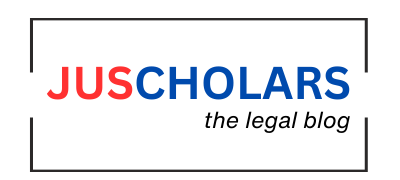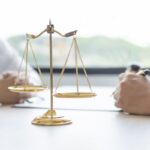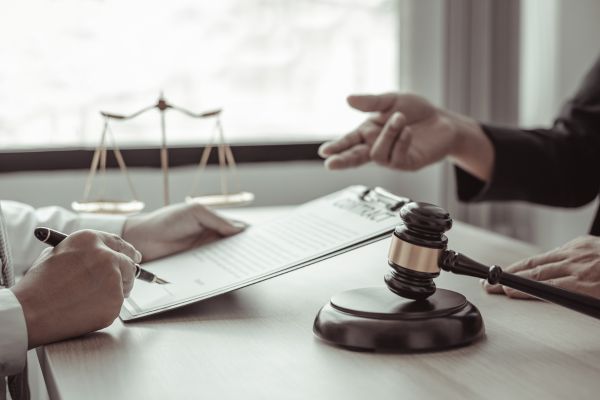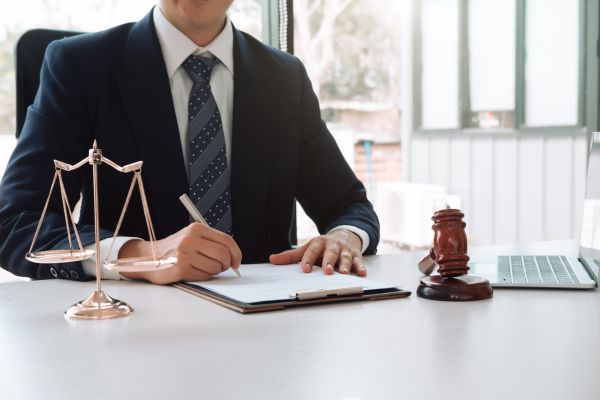Introduction
In the rapidly evolving era of AI, where tools such as deepseek, chat gpt are surpassing human capabilities, significant ambiguity and confusion arises in the intellectual property regime especially concerning copyright, trademark etc. Today, content can be created in one click , unlike earlier times where it required skill, hardwork and intellect of humans – the sweat of brow. Works that were considered a result of human intellect and skill such as library texts, to music and videos can be generated in a single click by AI, mimicking human problem solving capacities[1].
AI Driven IP infringement refers to the violation of Intellectual property rights such as copyright, trademark, patents etc occurring through the use of AI generated output. The recent trend of AI recreating studio ghibli-style pictures is a perfect real-world example of the copyright issues involved in AI-driven IP infringements which raised complex questions on the copyright infringement of the real creator of the studio ghibli style. The challenges on whether content created by generative ai can be considered an intellectual property is still in question. Also the legal accountability of ai driven infringements are also a topic of paramount consideration.
The current legal landscape governing the intellectual property such as copyright and the interpretation of those laws to include ai generated content as intellectual property is to be studied and the possible reforms or solutions to be sought. Also a comparative analysis on the legal landscape of both Indian and international laws is necessary to understand the scope of existing protections.The growth of Generative AI has made significant gaps in the current IP regimes to address the challenges of AI-driven infringement. To address these gaps, reform on the current legal landscape as well as rethinking of the principles of creativity, authorship and accountability is necessary in the AI era.
Understanding AI-Driven IP Infringements
The Intersection of AI and IP has introduced complex challenges. Generative AI systems are trained on huge databases which includes copyrighted works such as library texts, books, musics, videos, etc. When a prompt is given to generative AI, it processes the input and analyses the database available to it and will give an output that imitates human generated content. There are various types of AI driven IP infringements. A generative AI infringes copyright firms at the stage of input to output[2]. Using copyrighted works for training AI can also be considered a violation of copyright. In the landmark AI copyright case in US, the US Court ruled that the companies Stability AI, Midjourney, DeviantArt and Runway AI were violating artists’ rights by illegally storing their works in their image generation systems[3]
Studio Ghibli Style: Recently, the social media was flooded with fans and creators posting ghibli style images created by generative AI in various social media handles. The use of the AI tool (chatgpt) to create studio ghibli style pictures raised serious concerns about copyright infringement and moral rights violations[4]. An art form which was created by a skilled artist( Japanese creator, Hayao Miyazak) can be generated by an AI in a single click by deriving inspiration from copyrighted content which brings complex questions about the unauthorised use of copyright[5]. The U.S. Copyright Act, Indian Copyright Act and other international treaties such as the Berne Convention, grants exclusive rights to creators for their original works. The copyright law protects the expression of an idea rather than the idea( idea-expression dichotomy). So the replication of a style such as studio ghibli using AI tools infringes the right of the creator.
Recent technological developments, in artificial intelligence (AI) and machine learning, are challenges to the contemporary idea of advertising. Deepfakes which use AI to substitute the characteristics such as face, voice, skin tone, gender are misused which can cause brand confusion and dilute the trademark value[6]. Recently , a famous indian Playback singer Shreya Ghoshal has issued a notice regarding AI generated ads and fake links using her photos [7]. AI generated content has excelled in creating highly realistic content which were widely welcomed by the consumers but unless they knew about the source. Disclosing the use of ai generated images can negatively affect consumer responses and ad authenticity. When consumers know that a visual image was created by AI they perceive such an image to be made with a lower amount of effort[8].
AI voice cloning is another type of copyright infringement. The Arijit Singh Vs Codible Ventures LLP COM IPR SUIT (L) NO.23443 OF 2024, Judgement dt. July 26, 2024 case is the first Indian judgment which addressed the misuse of generative AI tools, intellectual property (IP) and music.The court held that the artists name, voice, image and other characteristics are protected under his personality rights and right to publicity[9].
In Zarya v. KATSU (Zarya of the dawn case)[10] Artist Zarya brought a lawsuit against the AI developer KATSU for generating AI art that was similar to her works. She questioned whether AI art can infringe on copyright. The case underlined the complexities of originality in AI-generated content. AI-generated works may infringe the preexisting rights of other creators in various ways. First, the AI could perform steps mentioned in patent claims. A lens designed by AI can infringe already existing patents on optical lens [11].
Indian Legal Framework and Gaps
Copyright Act: The legal accountability of AI in Indian IP Laws have certain challenges. Under the Indian Copyright Act[12]an author is a person. Even in computer generated works, the person who generates the work is the author. So the main challenge is to decide accountability when an intellectual property right is infringed due to the use of AI, such as the ghibli style pictures. It is unclear who will be responsible, the person who created that programme, the AI itself or the person who used it. The question arises who retains the ownership and authorship for AI generated content. Similarly, AI can mimic brand names or trade logos which creates risk of trademark infringement.
Trademark : The Walt Disney Case: In the age of AI, the risks associated with trademark dilution can be understood by the Walt Disney case where t AI-generated content potentially infringed on its trademarks. In this case, users created pixar style images of pets using Microsoft’s Bing AI imaging tool. Even though the intention was bonafide, AI generated the Disney-Pixar logo within some images, leading to trademark infringement[13].
A significant challenge is the lack of legal framework for the regulation and accountability of AI in India. There are legislations which cover Artificial Intelligence but ambiguity still exists. The Information technology Act covers data breaches, hacking , cybercrimes , which also imposes liability for negligent use of personal data using ai tools, and also punishes fraudulent use of computer systems ( deep fakes) . Under copyright and patents act also, author and inventor should be a legal person, AI being a non legal person, ambiguity exists on the interpretation of the word owner in the regime of Intellectual Property. Granting AI more favourable treatment may have a negative impact on human creativity in the long run. If there is liability where a human performs a certain act, why should we give a machine more favourable fair use treatment when it does the same. Policy Documents such as NITI Aayog’s “National Strategy for AI” (2018)[14], Responsible AI Guidelines [15] are not binding. This lack of proper legislation is a concern of utmost importance.
Judicial Interpretation and Jurisdictional Issues: Contradicting opinions have been given by Indian courts in various cases regarding the authorship, ownership and accountability arising out of AI generated content which furthermore creates an ambiguity. AI tools work across borders. It is programmed in one jurisdiction, trained in another, and used in multiple jurisdictions. This creates confusion and ambiguity in applicable laws. Therefore, adopting an International framework regulating multiple jurisdictions is the most effective way to mitigate this.
Jan Vishwas Act(Amendment of provisions),2023 (Decriminalization of IP law)[16]: This act removes criminal liability for copyright infringement, and removes imprisonment and replaces it with monetary compensation in cases of copyright infringement. Even though the act’s objective was to promote the ease of doing business, it might contradict the protection of IP.
International Legal Landscape
Various International Frameworks have evolved to address the challenges related to the intersection of AI and IP, especially in matters of authorship and ownership. Berne Convention[17]and the TRIPS Agreement (Trade-Related Aspects of Intellectual Property Rights)[18] an International framework for intellectual property rights which is widely accepted by nations, fails to clarify rights when AI replicates or uses protected works in training and is also silent on AI authorship or infringement.
WIPO Conversation on Intellectual Property and Artificial Intelligence[19]: It understands the intersection of AI and IP and also facilitates conversation on how IP systems should handle AI-generated works. It explores issues such as authorship, ownership and inventorship of AI content, accountability of AI Driven Infringement, and the ethical use of Data for AI training. Discussions were done on the socio economic and ethical impacts of AI on the IPsystem and the impact of AI on human creativity and its protection as copyright.
The European Union Artificial Intelligence Act (2024)[20] acts as a regulatory framework for high risk AI systems, by enforcing transparency and human oversight. The Act determines the extent of the positive effect of AI in human life. The Act has already gained recognition in several nations.
Despite the emergence of international frameworks such as the Berne Convention, TRIPS Agreement, WIPO Conversations, and the EU Artificial Intelligence Act, essential regulation at the intersection of AI and intellectual property is still inadequate. These enactments overlook intricacies of AI generated works but do not give clarity on authorship, ownership and liability. While discussions are going on, no binding legislation or regulation is in place.
Conclusion
It is evident that the current legal landscape governing AI in IP protection is inadequate as the current laws are not fully equipped to handle AI Driven IP Infringements. These challenges can be mitigated by introducing possible legal and policy reforms. The first step can be giving a proper interpretation about the legal personhood of AI and its accountability in Intellectual property infringements. Also Prominent AI companies shall follow transparency in data used for training AI and should incorporate licensing models for training on copyrighted material.
While the enactment of a new statute may be cumbersome and time consuming, the addition of certain clauses which provides for the regulation of AI tools and its use, also governing the accountability of such systems would be recommended. The harmonization of international AI related IP laws can also be a way forward. Balancing the interests of creators is as important as innovation. Similarly, Interpretation gaps in IP law especially in areas related to AI related inventions needs to be tackled. By creating ethical rules for AI in creating things, the variety of cultures and creativity can be protected.
[1]Mauritz Kop, AI & Intellectual Property: Towards an Articulated Public Domain, 28 Tex. Intell. Prop. L.J. 49 (2020)
[2] Ashay Maske, Generative AI and IP Infringement (Oct. 7, 2023), https://ssrn.com/abstract=4595149 or http://dx.doi.org/10.2139/ssrn.4595149.
[3] Torey Akers, U.S. Artists Score Victory in Landmark AI Copyright Case, The Art Newspaper (Aug. 15, 2024)
[4] A.S. George, The Dark Side of AI-Generated Ghibli-fication Images: A Review of the Potential Risks and Consequences, Partners Universal Int’l Innovation J.,
[5]Using ChatGPT’s Ghibli-style photos violates copyright laws, experts explain, Hindustan Times (Apr. 15, 2024), https://www.hindustantimes.com/world-news/using-chatgpts-ghibli-style-photos-violates-copyright-laws-experts-explain-101743257416332.html.
[6] Campbell, C., Plangger, K., Sands, S., & Kietzmann, J., Preparing for an Era of Deepfakes and AI-Generated Ads: A Framework for Understanding Responses to Manipulated Advertising, J. Advertising, in press.
[7]Shreya Ghoshal Issues Warning Against AI-Generated Ads and Fake Links Using Her Image: ‘I Cannot Do Anything About It’, The Economic Times (Apr. 6, 2025), https://economictimes.indiatimes.com/magazines/panache/shreya-ghoshal-issues-warning-against-ai-generated-ads-and-fake-links-using-her-image/articleshow/120041935.cms.
[8] Rita Ngoc To, Yi-Chia Wu, Parichehr Kianian & Zhe Zhang, When AI Doesn’t Sell Prada: Why Using AI-Generated Advertisements Backfires for Luxury Brands, J. Advertising Research (Mar. 17, 2025).
[9]WIPO, AI Voice Cloning: How a Bollywood Veteran Set a Legal Precedent, WIPO Magazine (Apr. 2024), https://www.wipo.int/web/wipo-magazine/articles/ai-voice-cloning-how-a-bollywood-veteran-set-a-legal-precedent-73631#:~:text=The%20Court%20held%20that%20%E2%80%9Cmaking,personal%20identity%20and%20public%20persona.%E2%80%9D.
[10] Zarya of the Dawn: The Case That Nearly Changed the History of US Copyright Law, 2 J. Legal Research & Juridical Sci. 576 (2024), https://www.jlrjs.com.
[11] Daryl Lim, AI & IP Innovation & Creativity in an Age of Accelerated Change, 52 Akron L. Rev. 813 (2018).
[12] The Copyright Act, No. 14 of 1957, INDIA CODE (1957), https://www.indiacode.nic.in/handle/123456789/1576.
[13]Paramita Nandy Gupta, Protection of Trademarks in the Age of Artificial Intelligence, De Penning & De Penning (Jan. 27, 2025), https://depenning.com/blog/protection-of-trademarks-in-the-age-of-artificial-intelligence/.
[14] NITI Aayog, National Strategy for Artificial Intelligence (2018), https://www.niti.gov.in/sites/default/files/2021-07/NationalStrategy-for-AI-Discussion-Paper.pdf.
[15] Ministry of Electronics & Information Technology, Responsible AI for All: Guidelines for Responsible AI (2021), https://www.meity.gov.in/writereaddata/files/Responsible_AI_for_All.pdf.
[16] Jan Vishwas (Amendment of Provisions) Act, No. 18 of 2023, INDIA CODE (2023), https://www.indiacode.nic.in/handle/123456789/5965.
[17] Berne Convention for the Protection of Literary and Artistic Works, Sept. 9, 1886, as revised at Paris, July 24, 1971, 1161 U.N.T.S. 3.
[18] Agreement on Trade-Related Aspects of Intellectual Property Rights, Apr. 15, 1994, Marrakesh Agreement Establishing the World Trade Organization, Annex 1C, 1869 U.N.T.S. 299.
[19]World Intellectual Property Organization, Artificial Intelligence and Intellectual Property, WIPO, https://www.wipo.int/en/web/frontier-technologies/ai_and_ip
[20]The Act Texts, EU Artificial Intelligence Act, https://artificialintelligenceact.eu/the-act/
Author Name- Merlin Ann Varghese






